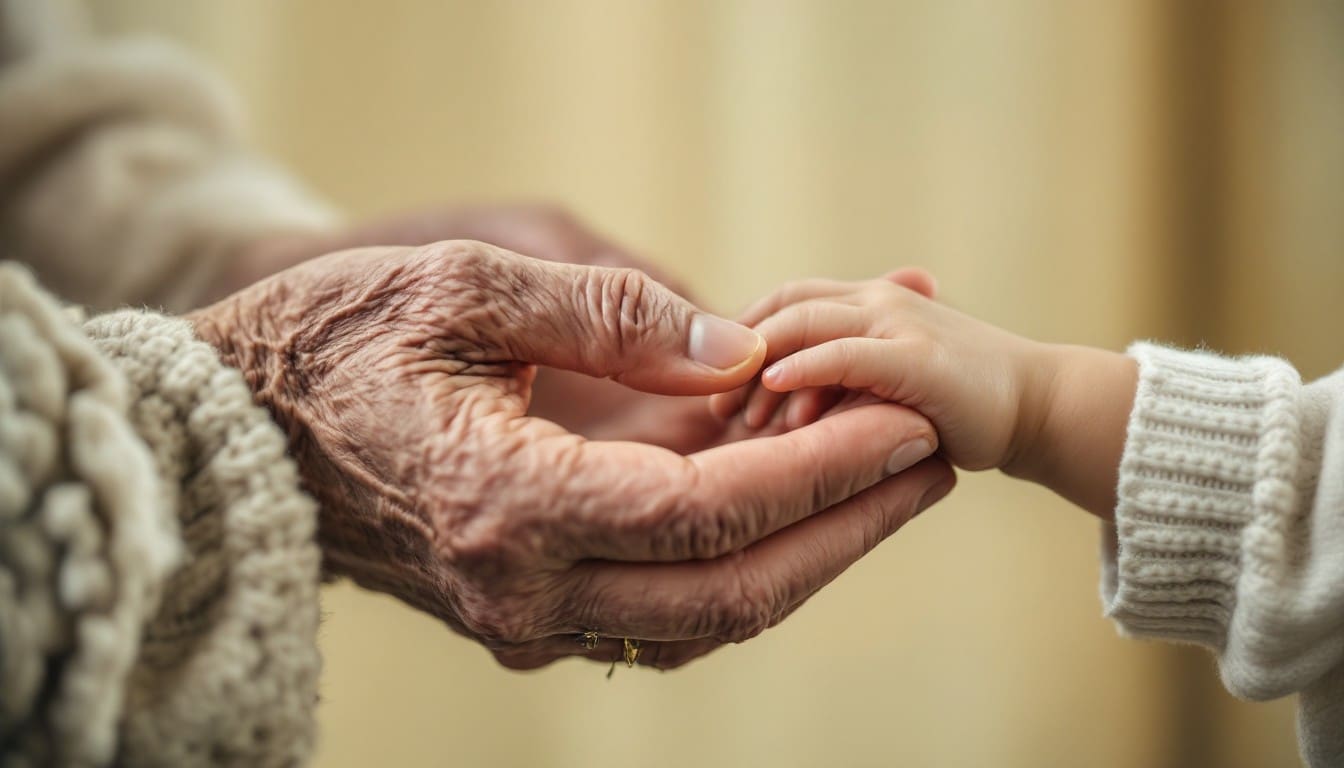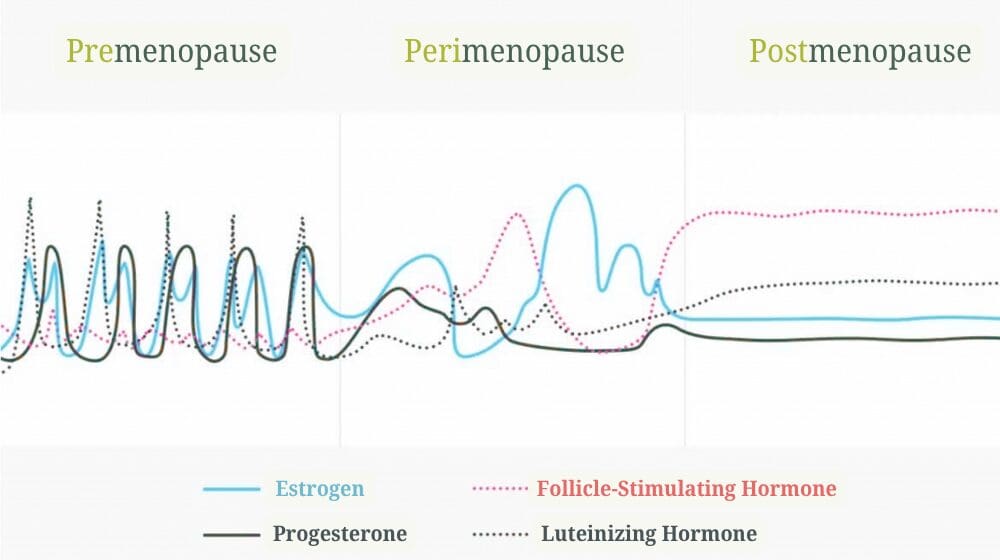From first cycles to final transitions, uncover how hormonal symptoms reflect the rhythms—and wisdom—of a woman’s life.
Welcome to Part 1 of a Two-Part Series on Hormones and Womanhood
Hormonal health touches nearly every part of a woman’s life—from mood and metabolism to sleep, skin, and stress resilience. Whether you’re moving through big transitions, feeling burned out, or simply trying to make sense of your body’s changes, this two-part series offers a grounded place to begin—with clarity, compassion, and real-life tools to help you understand what your body is truly saying.
In Part 1, we explore:
- How hormones show up as symptoms in daily life
- What your body may be communicating through mood, energy, and sleep patterns
- The natural rhythm of hormonal shifts across five life stages
- The vital role of circadian rhythm in hormonal harmony
Coming in Part 2: We look beyond symptoms to uncover how life seasons—like caregiving, grief, parenting, and post-viral fatigue—can quietly disrupt hormonal rhythms. You’ll see how true restoration begins when we care for the whole person, not just their hormones.
This blog is written for women—and for those who care about them, walk beside them, and want to better understand the journey through the seasons of womanhood.
Sarah’s Story
Sarah sits in her car after dropping her teenager at school, suddenly overwhelmed by a wave of exhaustion that coffee can’t touch. At 43, she’s juggling a demanding career, caring for her aging mother, and trying to support her daughter through the emotional storms of adolescence—all while carrying the invisible weight of stress, responsibility, and self-expectation. Her periods have become unpredictable, her sleep restless, and her once-sharp mind feels wrapped in fog.
And she’s not alone. Hormonal shifts affect nearly every woman at some point in life—up to 85% report hot flashes, while others navigate sleep disruptions, mood swings, or brain fog during perimenopause. Yet most of us have been taught to fear these changes rather than understand them [4].
Hormones—the body’s chemical messengers—are delivered through the bloodstream like tiny text messages, quietly orchestrating our internal rhythms. They influence everything from energy and rest to mood, metabolism, focus, and more. When they shift, we feel it—often long before a lab result tells us something’s wrong.
What if our hormones weren’t a problem to fix—but a rhythm to understand?
As women, we’re often taught to feel uneasy about our hormones—from the emotional tides of adolescence to the energy dips before our period, the brain fog of perimenopause, and the weight gain or night sweats of menopause. We’re told that being female means being unpredictable, moody, or hard to manage. But what if the problem isn’t our hormones—what if it’s the way we’ve been taught to understand them?
This blog invites you into a gentler, wiser conversation—not to teach hormone biochemistry or clinical pathways, but to offer a whole-person view of how hormones show up in real life—and how we might respond with clarity and compassion.
Together, we’ll explore how hormonal shifts move through the rhythm of daily life—and how a whole-person approach can help us begin to restore balance, one layer at a time.
🗣 Hormonal Symptoms: When Our Body Speaks
Hormonal shifts often begin subtly—before lab results or diagnoses ever show a change. They speak through how we feel, how our bodies function, and what we see on the surface. What feels confusing or inconvenient is often a meaningful signal: your body gently asking for support.
Hormonal symptoms may seem random, but they are often your body’s quiet way of asking to be heard.
These disruptions might seem unrelated, but together they hint at deeper imbalance—what some call Metabolic Chaos®—when multiple systems fall out of sync. These shifts unfold across three interconnected layers: our inner landscape (emotions and energy), our physical rhythm (daily body functions), and our surface signals (what shows up outwardly). By learning to notice them with curiosity rather than judgment, we begin to support what our body truly needs.
🌈 The Inner Landscape: How We Feel and Function
Hormonal imbalances often begin quietly—showing up in our mood, focus, and energy levels long before they appear on labs. These early shifts can affect how we think, feel, and move through the day. They’re signs of how the body is adapting beneath the surface, gently signaling that something needs care and attention.
These emotional and mental shifts are often the body’s earliest invitations to slow down and listen.
- Mood changes — Irritability, emotional swings, or a sense of flatness can be early hormonal signals—often surfacing long before a diagnosis or lab result. This might show up as teen outbursts, quiet anxiety, tearfulness, or a loss of joy in midlife. These shifts often reflect changes in estrogen, progesterone, cortisol, or even neurotransmitters like serotonin.
- Loss of motivation or drive — When focus fades or follow-through feels harder than it used to, it may not be procrastination—it may be depletion. Hormones like cortisol, dopamine, thyroid, and testosterone shape how we start tasks, keep going, and feel rewarded. What feels like low motivation—or a fading zest for life—may be the brain adapting to hormonal shifts. Or the nervous system simply conserving energy under stress.
- Cognitive shifts — Forgetting what you were about to say, zoning out mid-conversation, or struggling to focus may be more than distraction—it’s often hormonal. For teens, this might look like trouble concentrating in school. For adults, it can feel like brain fog from juggling too many mental tabs. Estrogen, cortisol, and thyroid hormones all play key roles in memory, clarity, and mental sharpness.
- Energy fluctuations — Cycling between powering through and crashing is a pattern many people normalize—but it can be a key sign of hormonal strain. Some feel wired but tired at night, others rely on caffeine just to function, yet still can’t unwind. These shifts often reflect imbalances in cortisol, insulin, thyroid, or adrenal rhythm.
Hormones speak through subtle shifts—how we feel, how we focus, how we move through the day—before labs can explain it.
⚙ The Physical Rhythm: How Our Bodies Respond
This is how our hormonal rhythms show up in the body’s daily cycles—through sleep, weight, temperature, and reproductive patterns. These physical cues may feel scattered at first—but together, they reveal a meaningful pattern.
- Circadian rhythm shifts — Feeling jetlagged in your own life? Teens may struggle to wake up, while adults get a second wind at night and crash in the morning. Your body’s 24-hour clock guides hormones, digestion, and sleep. When it’s thrown off, everything can feel out of sync. These shifts often reflect disruptions in cortisol, melatonin, or blood sugar rhythm.
- Sleep disruptions — Tossing and turning, waking at 3 a.m., or sweating through the sheets? These patterns often reflect cortisol or melatonin shifts. When they’re off, energy, mood, and immunity all take a hit. Sleep isn’t just rest—it’s hormone repair time.
- Appetite or craving shifts — Changes in appetite or sudden cravings—especially for sugar, salt, or carbs—can be driven by hormones like insulin, cortisol, estrogen, and leptin. These shifts often follow the menstrual cycle or show up during stress, poor sleep, or emotional overwhelm. Cravings are the body’s way of signaling a need—not a failure of willpower.
- Weight struggles — Clothes fitting differently despite no major changes? Hormones like insulin, cortisol, and thyroid influence how your body stores or burns fat. When off, weight can feel unpredictable. Shifts in fat distribution—like more around the belly, hips, or upper body—may reflect deeper hormonal stress or survival adaptation.
- Temperature sensitivity — Sudden hot flashes, night sweats, or feeling cold in warm rooms may reflect shifting estrogen levels and your body’s struggle to regulate temperature. These shifts are especially common during perimenopause or chronic stress.
- Blood pressure changes — Feeling lightheaded when you stand up, flushed after eating, or tense without warning? These may reflect shifts in cortisol, aldosterone, estrogen, or thyroid hormones. When your body is under stress, it may adjust circulation as a way to stay balanced—even if it doesn’t always feel that way.
- Menstrual cycle changes — Periods may become short, long, heavy, unpredictable—or even pause for a time. This is often one of the first outward signs of hormonal imbalance. For teens, it can feel confusing or isolating at school. For adults, it may disrupt daily routines and mental clarity. Your cycle isn’t just about fertility—it’s a monthly check-in on how your hormones are doing.
- Libido shifts — A drop in desire, comfort, or connection can affect intimacy and self-confidence. These changes may ebb and flow with the menstrual cycle, or show up more often during stress, postpartum, or perimenopause. Hormones like testosterone, estrogen, and oxytocin shape how we connect, feel pleasure, and experience closeness—physically and emotionally.
These patterns reveal how daily disruptions—often brushed off as normal—are actually part of the body’s intelligent feedback loop.
A regular period is more than a reproductive sign—it’s a vital sign of hormone balance and metabolic resilience.
🔍 The Surface Signals: What Others (and We) Can See
Some of the clearest hormonal messages are the ones we can see. While internal shifts often speak first, they eventually rise to the surface—showing up in our skin, hair, digestion, or joints. These signs are often dismissed as cosmetic or simply age-related, but they frequently point to something deeper.
These outward changes—whether subtle or dramatic—can reflect the body’s inner story. From collagen loss to inflammation or gut imbalances, what shows up on the surface often mirrors how our hormones are interacting with the immune, digestive, and detoxification systems.
- Skin changes — Breakouts, dryness, itchiness, or dull tone may reflect shifts in estrogen, gut microbiome health, or systemic inflammation. These can feel especially frustrating in adolescence or perimenopause, impacting both comfort and confidence.
- Hair changes — Thinning, shedding, or changes in texture and shine can point to thyroid imbalance, low estrogen, stress, or nutrient gaps (like iron or B vitamins). Some may notice hair growing in new places, while others experience more shedding or early greying. These shifts can show up gradually or suddenly, especially after childbirth or during menopause.
- Gum or oral health — Bleeding gums, increased sensitivity, or changes in taste may reflect hormonal shifts—particularly in estrogen or progesterone. These signs are common during pregnancy, menstruation, and menopause, and can also reflect systemic inflammation or early signs of nutrient depletion.
- Body odor or sweat changes — A sudden shift in how you smell—or how much you sweat—can be tied to hormone fluctuations that impact detox pathways, stress response, or even bacterial balance on the skin. These changes often show up around perimenopause, postpartum, puberty, or during high-stress seasons.
- Headaches and migraines — These often follow a cyclical pattern, peaking around ovulation or menstruation, and may signal fluctuating estrogen or histamine sensitivity. They’re common during hormonal transitions—like puberty, cycle shifts, or menopause—or under chronic stress.
- Body tension and aches — Achiness, stiffness, or heaviness—especially in the neck, hips, or knees—can intensify when estrogen drops, since it helps regulate inflammation and repair connective tissue. Stress, too, can settle into the body, showing up as tight shoulders, a clenched jaw, or tension we carry without even realizing. Sometimes, this is how our hormones are quietly responding to everything we’re holding.
- Water retention — Puffiness in the face, fingers, or ankles—along with bloating—may reflect hormone shifts that influence fluid balance and inflammation. Estrogen, cortisol, and aldosterone all play a role in how your body holds or releases water—especially around the cycle or under stress.
- Digestive changes — Bloating, constipation, food sensitivities, or irregularity can surface when shifts in progesterone or cortisol slow gut motility, reduce enzyme output, or throw off stomach acid—sometimes too low to break down food well, sometimes feeling too strong under stress. These patterns often show up before a period or during high-stress seasons—quiet signals from a gut that’s carrying more than we realize.
- Bladder changes — Increased urgency, frequency, or mild leaking may show up when estrogen drops and pelvic tissues lose support. These shifts are more common than most women realize—even postpartum or during perimenopause—and often reflect hormonal changes that affect muscle tone and nerve signaling.
Hormonal changes often appear on the surface—long before they’re measured. Your body speaks first through how it feels.
These signs rarely appear overnight. They often build gradually during life’s more demanding seasons—like caregiving, grief, or changing roles. Over time, they become the body’s way of signaling that deeper hormonal shifts are taking place. Now, let’s explore how those changes unfold across the key stages of womanhood.
🌗 Hormone Shifts Across Life Stages
Just as nature moves through seasons, our hormones follow their rhythm throughout life. Each stage brings its own shifts, challenges, and invitations for deeper understanding—a unique hormonal landscape shaped by both biology and the life we live.
This chart shows how key hormones shift across a woman’s life. Premenopause refers to the reproductive years, when estrogen and progesterone follow a predictable monthly rhythm. Perimenopause is the transition leading up to menopause—often lasting 4 to 10 years—marked by hormone fluctuations, irregular cycles, and the gradual decline of progesterone. During this time, estrogen may spike or crash, and FSH and LH begin to rise. Postmenopause begins after 12 consecutive months without a period. At this stage, estrogen and progesterone remain low, while FSH and LH stay elevated. These hormonal shifts help explain many of the physical and emotional changes women experience through midlife and beyond.
🦋 Adolescence is a season of firsts—first cycles, first shifts in identity, and first brushes with hormonal intensity. Estrogen and progesterone begin to rise as the body learns its monthly rhythm. Mood swings, breakouts, increased body awareness, and painful periods are common as the developing brain and body find their footing [1].
Puberty Timing Shifts — Some girls are entering puberty earlier than in generations past, often due to environmental exposures that mimic estrogen or disrupt hormone signaling. At the same time, others experience delayed puberty when the body senses stress, undernourishment, or emotional strain. Whether accelerated or slowed, these shifts reflect how sensitive the developing body is to its surroundings—and how hormones respond when life falls out of rhythm.
🌷 Reproductive Years bring the full expression of our monthly rhythm. Estrogen rises before ovulation, enhancing energy, focus, and libido. Progesterone rises after, promoting calm, sleep, and the possibility of pregnancy. Many women feel this rhythm intuitively—rising into creativity and connection mid-cycle, then naturally drawing inward before menstruation. But this rhythm is sensitive—stress, poor sleep, under-eating, over-exercising, or chronic output can throw it off course, leading to irregular cycles, PMS, or signs of burnout. Supporting this phase well builds resilience for the transitions that follow [2].
🌸 Perimenopause gently ushers in the transition out of our reproductive years, often beginning in the late 30s or early 40s. Ovulation becomes less consistent, progesterone begins to decline, and estrogen starts to fluctuate more unpredictably. These shifts can bring emotional sensitivity, anxiety, or disrupted sleep—but symptoms don’t tell the whole story. Every woman’s experience is shaped by both her biology and the season of life she inhabits. This transition often intersects with modern stressors—poor sleep, emotional overload, toxin exposure, and nutrient depletion can all intensify symptoms or make recalibration more difficult. Perimenopause is as much about emotional integration as it is about hormonal change. [2][3][4].
🌻 Menopause is marked by 12 consecutive months without a period and reflects the body’s natural decline in estrogen and progesterone. This hormonal shift can bring hot flashes, brain fog, joint stiffness, or vaginal dryness. Some women also describe a feeling of emotional flatness or loss of inner spark. But it can also offer a deepening sense of clarity, creativity, or freedom. Experience varies widely, shaped by each woman’s story. Sleep quality, nutrient reserves, toxin load, and nervous system stress all influence how this transition unfolds. With the right support, menopause becomes not just an ending—but a reclamation of energy and purpose [5][6].
🌅 Postmenopause brings a new hormonal baseline—consistently low levels of estrogen and progesterone. While some women feel more stable, this season can bring new challenges: bone loss, cognitive decline, heart disease, and metabolic shifts. But hormones are only part of the story. Gut health, inflammation, resilience, and emotional well-being all shape how the body responds. With intentional care, this season can be one of strength, renewal, and a return of energy and joy that once felt far away [4][7].
Hormonal changes aren’t failures—they’re transitions. Your body isn’t breaking; it’s adapting.
Each stage of womanhood offers its own rhythm—sometimes tender, sometimes turbulent, but always full of meaning.
When we stop seeing these changes as problems and start recognizing them as invitations to reconnect with ourselves, we begin to meet our hormones with greater grace. This is often where restoration begins.
This series offers a way to listen more closely, respond more gently, and recognize that even hormonal shifts carry meaning and are worth honoring.
🌸 Coming Up Next: When Life Overwhelms Your Hormones
You’ve just taken the first step—tuning in to your body’s signals.
But what happens when life doesn’t let up—when caregiving, grief, or relentless demands begin to take their toll?
In Part 2, we explore the hidden burdens—like infections, trauma, and chronic overload—that quietly pull your hormones off rhythm. You’ll see why true healing isn’t about fixing symptoms, but about supporting your body, mind, and heart through every season.
👉 Continue with Part 2: Healing Hormones, Restoring Rhythm
Until then—pause, breathe, and remember:
You are not broken. You are becoming.
📅 Ready to begin your wellness journey now?
Explore the 90-Day Wellness Journey—a personalized path that meets you in the season you’re in.
📚 References
1. Anna Cabeca, DO, The Hormone Fix, 2019.
2. Mindy Pelz, DC, Eat Like a Girl, 2024.
3. Felice Gersh, MD, The Science of Bioidentical Hormones for Better Health After Menopause, 2023.
4. Lisa Mosconi, PhD, The Menopause Brain, 2024.
5. Georgia Ede, MD, Change Your Diet, Change Your Mind, 2024.
6. Saundra Dalton-Smith, MD, Sacred Rest, 2017.
7. Gabrielle Lyon, DO, Forever Strong, 2023.
8. InspiredByFamilyMag.com, Seasons of a Woman’s Life, 2020.
9. Mark Buchanan, Spiritual Rhythm, 2010.
📩 Let’s Connect
If this blog resonated with you—or if you’re sensing shifts in your own life—I’d love to hear your story. Whether you’re navigating a challenging season or seeking clarity around your health, you deserve support that truly sees and honors you. Let’s begin a conversation that meets you right where you are.
Let’s walk this season together—with grace and wisdom.

keep browsing
I help women reconnect with their bodies and create lasting wellness with personalized nutrition, functional health, and energy practices—so your body can thrive. Feeling wired yet tired, struggling with fatigue, sleep disruptions, digestive issues, or hormonal imbalances? You’re in the right place.
Meet your coach, Ruth!
You Might Also Like...

Chloey’s story is one of patience, prayer, and steady progress. Through diet, therapy, and faith-filled parenting, her family discovered that growth may be slow, but it blossoms when nurtured with love, wisdom, and consistency—offering hope for every step of the journey.

Vitamin D is more than sunshine or supplements. Behind the numbers, your body manages savings and spending accounts, cofactors like magnesium and vitamin A, and patterns that labs help reveal. Seeing the full system makes it easier to choose wisely and stay balanced.

Explore how the Gage R&R concept—practiced in engineering—offers a helpful lens for understanding variability in functional health lab testing. Lab results aren’t always clear-cut; deeper insight comes from considering timing, environment, and your body’s real-life context—not just numbers on a report.
How Can I Support You?
Ruth helps women reclaim clarity, confidence, and vitality through a whole-person approach to healing. She integrates lab insights, energy medicine, and personalized wellness strategies to support each client’s unique path to balance and resilience. While she doesn’t diagnose or treat conditions, she helps uncover lifestyle and environmental factors affecting well-being—and equips women with lasting tools to rebuild their health and confidently support those they love.
